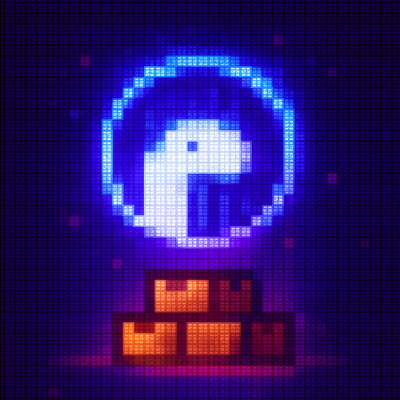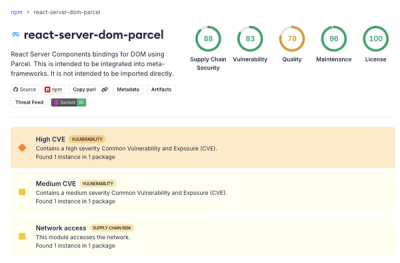
Security News
Deno 2.6 + Socket: Supply Chain Defense In Your CLI
Deno 2.6 introduces deno audit with a new --socket flag that plugs directly into Socket to bring supply chain security checks into the Deno CLI.
azure-iot-device
Advanced tools
#azure-iot-device The core components of the Azure IoT device SDK.
Use the Azure IoT device SDK to:
You need to install the Node.js JavaScript runtime environment to run the Azure IoT JavaScript client SDK on your platform. To check if Node.js supports your platform (OS), verify that an install package is available on the Node.js download page.
npm is a command-line package manager that is installed with Node.js is installed, and will be used to install Azure IoT node.js client side SDK.
npm install azure-iot-device to get the latest version.
This package contains the core components of the Azure IoT device SDK, but doesn't include a transport over which to communicate with Azure IoT Hub. Your application must require a transport package in addition to the core package to do something useful.
For example, if you want to send an event from your device to an IoT Hub using the AMQP protocol you must first install the azure-iot-device-amqp package:
npm install azure-iot-device-amqp
Then you can use the code below to send a message to IoT Hub.
Note that for this sample to work, you will need to setup your IoT hub and provision your device and get its credentials. In the code, replace '[IoT Hub device connection string]' with the device credentials created in the IoT Hub.
var connectionString = '[IoT Hub device connection string]';
// use factory function from AMQP-specific package
var clientFromConnectionString = require('azure-iot-device-amqp').clientFromConnectionString;
// AMQP-specific factory function returns Client object from core package
var client = clientFromConnectionString(connectionString);
// use Message object from core package
var Message = require('azure-iot-device').Message;
var connectCallback = function (err) {
if (err) {
console.error('Could not connect: ' + err);
} else {
console.log('Client connected');
var msg = new Message('some data from my device');
client.sendEvent(msg, function (err) {
if (err) {
console.log(err.toString());
} else {
console.log('Message sent');
};
});
};
};
client.open(connectCallback);
See the azure-iot-device-* transport-specific packages for more information.
You will find more samples showing how to use the Azure IoT device SDK for node here.
If you want to modify the module's code and/or contribute changes, you will need to setup your development environement following these instructions.
FAQs
Azure IoT device SDK
The npm package azure-iot-device receives a total of 11,635 weekly downloads. As such, azure-iot-device popularity was classified as popular.
We found that azure-iot-device demonstrated a not healthy version release cadence and project activity because the last version was released a year ago. It has 6 open source maintainers collaborating on the project.
Did you know?

Socket for GitHub automatically highlights issues in each pull request and monitors the health of all your open source dependencies. Discover the contents of your packages and block harmful activity before you install or update your dependencies.

Security News
Deno 2.6 introduces deno audit with a new --socket flag that plugs directly into Socket to bring supply chain security checks into the Deno CLI.

Security News
New DoS and source code exposure bugs in React Server Components and Next.js: what’s affected and how to update safely.

Security News
Socket CEO Feross Aboukhadijeh joins Software Engineering Daily to discuss modern software supply chain attacks and rising AI-driven security risks.